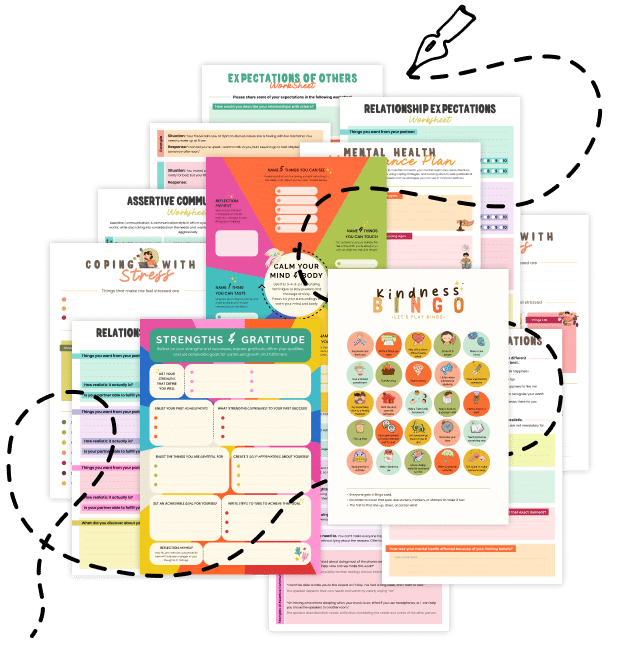20 Things You Should Know About Circadian Neuroscience
Explore how your brain’s internal clock controls sleep, energy levels, and health. Dive into these 20 insights on Circadian Neuroscience to optimize your daily rhythms.
1. What Is Circadian Neuroscience?
Circadian Neuroscience studies the biological clocks controlling our 24-hour cycles of sleep, alertness, hormone release, and more. The term “circadian” comes from the Latin circa diem, meaning “about a day.”
2. The Master Clock: The SCN
Deep in the brain’s hypothalamus lies the suprachiasmatic nucleus (SCN)—the “master clock.” It coordinates other biological clocks throughout the body, keeping them in sync with the day-night cycle.
3. Why Daylight Matters
Light exposure is the SCN’s most powerful cue for resetting your internal clock daily. Specialized cells in your eyes detect changes in ambient light, relaying that info to the SCN to trigger wakefulness or sleepiness.
4. The Influence on Hormones
Circadian rhythms regulate hormones like melatonin (rises at night to encourage sleep) and cortisol (peaks in the morning to boost alertness). Disrupting these cycles can lead to fatigue or mood fluctuations.
5. Chronotypes Explained
Your chronotype—whether you’re a “morning lark,” “night owl,” or somewhere in between—reflects variations in circadian timing. It’s not just preference; genetics and age play roles in determining when you naturally feel sleepy or alert.
6. Circadian Disruption and Health
Shift work, jet lag, or late-night screen time can throw off the SCN’s signals, leading to poor sleep, impaired cognitive function, and increased risks for metabolic issues or mood disorders over the long term.
7. Jet Lag vs. Social Jet Lag
- Jet lag happens when you cross multiple time zones quickly, confusing the internal clock.
- Social jet lag occurs when you shift your sleep schedule drastically on weekends compared to weekdays, causing Monday-morning sluggishness.
8. Light Timing Strategies
- Morning Light: Helps shift your clock earlier, ideal for night owls who want an earlier start.
- Avoiding Evening Blue Light: Reduces melatonin suppression, promoting better sleep onset.
9. Seasonal Variations
In winter, shorter daylight hours can trigger changes in circadian patterns—sometimes leading to seasonal affective disorder (SAD). More time outdoors or using light therapy boxes can help.
10. Temperature and Circadian Rhythms
Your body temperature also follows a daily pattern, typically peaking in late afternoon and dipping at night. A cooler bedroom temperature aids deeper sleep, aligning with that natural nighttime drop.
11. Caffeine’s Role
Caffeine disrupts adenosine—a chemical that builds sleep pressure—thus delaying fatigue. Late-day caffeine intake can shift your circadian rhythm and make it harder to fall asleep at your usual time.
12. The Second Wind
When you push past your usual bedtime, your brain can trigger a “second wind” surge of alertness—essentially a circadian catch that can keep you up even later and deepen sleep debt.
13. Chronopharmacology
Timing medication (or supplements) to match your circadian phases can enhance effectiveness or reduce side effects. This burgeoning field—chronopharmacology—seeks to optimize treatment schedules.
14. Timing of Meals
Your digestive system also runs on a circadian clock. Late-night eating can disrupt metabolic rhythms, increasing risks like weight gain and poor glucose control. Aligning mealtimes with daylight hours supports better health.
15. Beyond Sleep: Cognitive Performance
Most people have a peak cognitive window mid- to late-morning and a lower-energy trough in the early afternoon. Knowing your personal rhythm helps you schedule demanding tasks when you’re most mentally sharp.
16. Circadian Research in Sports
Athletes often tailor training sessions and competitions to their circadian sweet spots. Studies show that performance—strength, reaction time, even motivation—can fluctuate depending on the time of day.
17. Tech Tools to Track Rhythms
Wearables (e.g., smartwatches) offer data on sleep stages and daily activity, giving insight into your natural patterns. Blue-light filters or screen curfews can minimize nighttime circadian disruption.
18. Chrono-Hacking
Chrono-hacking is the practice of adjusting your daily schedule, light exposure, and habits to optimize circadian alignment. Examples:
- Gradual bedtime shifts
- Strategic exposure to morning sunlight
- Keeping consistent wake times, even on weekends
19. Times of Vulnerability
Studies indicate increased heart attack risk in the early morning when cortisol spikes, and lower alertness during mid-afternoon. Understanding these variations can guide lifestyle choices (like avoiding high-stress activities at vulnerable times).
20. Related Topics to Explore
- Chronotype Alignment: Matching tasks to your natural sleep-wake inclinations
- Directed Attention Fatigue: How sustained focus interacts with circadian dips
- Neurobics: Exercises that challenge the brain’s adaptability across different times of day
- Mind-Wandering Mode: Letting your mind drift can be more beneficial when energy dips
Quick Tips for Healthy Circadian Rhythms
- Sync with Sunlight: Get natural light soon after waking; dim lights in the evening.
- Consistent Bedtimes: Aim for the same sleep window daily, weekends included.
- Dodge Late Caffeine: Avoid coffee or tea at least 6–8 hours before bedtime.
- Mind Your Meals: Prefer earlier dinners, leaving time to digest before sleep.
- Embrace Darkness: Limit screen time and bright LEDs in the hour leading up to bedtime.
Circadian Neuroscience underscores the profound impact of our internal clocks on everything from sleep quality to mood, metabolism, and cognitive performance. By respecting and aligning with these natural rhythms—tweaking light exposure, meal times, and daily routines—you can sharpen your focus, boost your well-being, and get more out of each day.
Share this article with anyone who’s battling constant fatigue or disorganized sleep—they might be missing out on the circadian advantage that a few simple lifestyle adjustments can unlock!
Need a Professional Workbook Design Service?
From worksheets to activities, discover thoughtfully designed tools to support your mental health journey.

